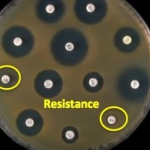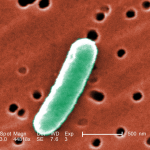A team of researchers wants patients to shorten their antibiotic course. This suggestion is problematic, and possibly dangerous, both to individuals and the larger battle against antibiotic resistance. And it goes against the recommendations of many organizations.
antibiotic resistance
It's no secret that carbapenem-resistant Enterobacteriaceae (CRE), a nightmare infection, is spreading. There are now about 200 cases identified in the United States. But most people don't know how scientists determine whether a bug is resistant to a given antibiotic or not. It's really pretty simple, so here's a quick primer.
Here are the final four exciting developments in science, health and technology of 2017. And, a prediction for what innovation could be truly disruptive in the future.
The "all-natural" food craze has extended to pets, with some companies making raw meat products for dogs and cats. Recent research makes us question the wisdom of such a practice, since some raw cat foods are contaminated with antibiotic-resistant bacteria. That, of course, could spread to pet owners.
Proper use of antibiotics in animals, just like in humans, can slow bacterial resistance. Europe leads the way in cutting antibiotic use. Meanwhile, the United States lags behind.
Bacteria that are resistant to one, multiple or even all known antibiotics – commonly known as superbugs – are a leading concern in the medical and scientific communities. With traditional methods of combating infections not working alternative ways are required, starting with rethinking the instruments used in hospitals.
For decades, only three mechanisms for spreading DNA (such as antibiotic resistance genes) from one bacterium to another were known. Now researchers have characterized a fourth, adding a new wrinkle in our war on bacteria and a new page to microbiology textbooks.
Telling the difference between a viral and bacterial infection isn't always easy. Physicians end up guessing, which results in prescriptions being given for unnecessary antibiotics. A group is working on a new tool that could take the guesswork out of this important issue.
Recognizing the highly integrated nature of patient sharing between institutions, the Centers for Disease Control rightly aims to make a dent in healthcare-associated infection deaths by using a regional, nuanced approach. Thank you.
Our Dr. Jamie Wells attended a forum yesterday at the Harvard Club of New York. Public Health leaders presented diverse perspectives on how the complex task of preventing healthcare-associated infections needs to be approached.
Every day that a new antibiotic development is delayed will mean more people will die from antibiotic-resistant infections. But a fair plan to provide incentives for companies to continue, or re-enter, antibiotic research is being held up in the U.S. House. Democrats get the blame here.
As bacterial resistance continues to grow and antibiotics become harder than ever to discover, there may be a new guideline that should be invaluable in assisting the search for new antibiotics – especially those for Gram-negative bacteria, the toughest nut to crack. A non-obvious, but potentially game-changing observation could revolutionize the way in which new antibiotics are discovered.











